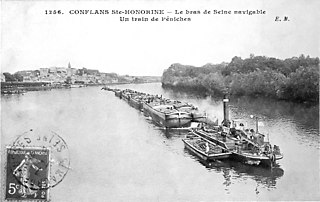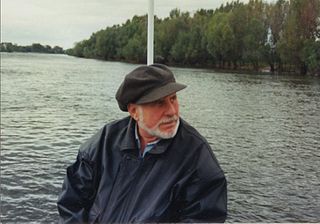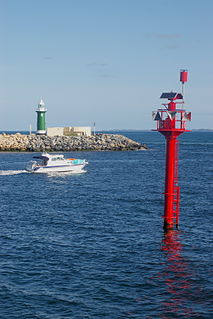 W
WA barge is a shoal-draft flat-bottomed boat, built mainly for river and canal transport of bulk goods. Originally barges were towed by draft horses on an adjacent towpath. Barges have changed throughout time. From 1967 to 1983 barges were considered a flat bottom boat that was nineteen feet in length or larger. Today, barges may be self-propelled, usually with a slow-revving diesel engine and a large-diameter fixed-pitch propeller. Otherwise, "dumb barges" must be towed by tugs, or pushed by pusher boats. Compared to a towed barge, a pusher system has improved handling and is more efficient, as the pushing tug becomes "part of the unit" and it contributes to the momentum of the whole.
 W
WA ship canal is a canal especially intended to accommodate ships used on the oceans, seas, or lakes to which it is connected.
 W
WA chain boat, chain tug or chain-ship was a type of river craft, used in the second half of the 19th century and first half of the 20th century on many European rivers, that made use of a steel chain laid along the riverbed for its propulsion. The chain was hauled by a steam engine mounted on board and enabled the boat to tow a string of barges. In Germany, such a boat was variously referred to as a Kettenschleppschiff, Kettenschlepper, Kettendampfer or Kettenschiff and in France as a toueur.
 W
WChain-boat navigation or chain-ship navigation is a little-known chapter in the history of shipping on European rivers. From around the middle of the 19th century, vessels called chain boats were used to haul strings of barges upstream by using a fixed chain lying on the bed of a river. The chain was raised from the riverbed to pass over the deck of the steamer, being hauled by a heavy winch powered by a steam engine. A variety of companies operated chain boat services on rivers such as the Elbe, Rhine, Neckar, Main, Saale, Havel, Spree and Saône as well as other rivers in Belgium and the Netherlands. Chain boats were also used in the United States.
 W
WThe German–Polish Poets' Steamer was a literary event on several ships that took place under the direction of skipper Hans Häußler together with German and Polish poets annually for 10 days from 1995 to 1999 in September between Szczecin and Görlitz/Breslau.
 W
WThe International Register of Shipping or IS was established in 1993, and is an independent classification society which provides classification, certification, verification and advisory services. The International Register of Shipping also offers consulting services well suited for the shipping and offshore industry.
 W
WMaritime transport and fluvial transport, or more generally waterborne transport, is the transport of people (passengers) or goods (cargo) via waterways. Freight transport by sea has been widely used throughout recorded history. The advent of aviation has diminished the importance of sea travel for passengers, though it is still popular for short trips and pleasure cruises. Transport by water is cheaper than transport by air, despite fluctuating exchange rates and a fee placed on top of freighting charges for carrier companies known as the currency adjustment factor. Maritime transport accounts for roughly 80% of international trade, according to UNCTAD in 2020.
 W
WA body of water, such as a river, canal or lake, is navigable if it is deep, wide and calm enough for a water vessel to pass safely. Such a navigable water is called a waterway, and is preferably with few obstructions against direct traverse that needed avoiding, such as rocks, reefs or trees. Bridges built over waterways must have sufficient clearance. High flow speed may make a channel unnavigable due to risk of ship collisions. Waters may be unnavigable because of ice, particularly in winter or high-latitude regions. Navigability also depends on context: a small river may be navigable by smaller craft such as a motorboat or a kayak, but unnavigable by a larger freighter or cruise ship. Shallow rivers may be made navigable by the installation of locks that regulate flow and increase upstream water level, or by dredging that deepens parts of the stream bed.